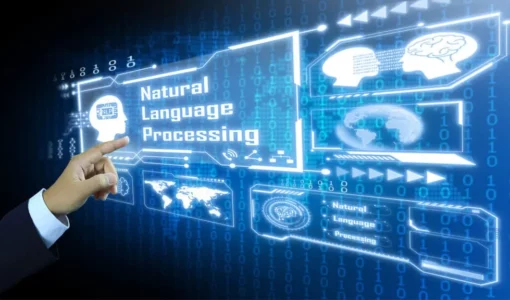
There are patients who wouldn’t prefer to have a chat about their medical issues with a bot. Therefore, chatbots are one of the reasons behind patients feeling detached from their healthcare professionals. Most emergency situations require professional intervention, but there are times when patients can benefit from a quick self-assessment. If the condition is not too severe, a chatbot can help by asking a few simple questions and comparing the answers with the patient’s medical history. A chatbot like that can be part of emergency helper software with broader functionality. Doctor appointment chatbot development is gaining traction with many health providers.
Top Technology Trends and the Evolving Landscape of Jobs and Industries – Times of India
Top Technology Trends and the Evolving Landscape of Jobs and Industries.
Posted: Sun, 11 Jun 2023 09:33:28 GMT [source]
These algorithms can analyze vast amounts of data from clinical trials, scientific literature, and other sources to identify potential targets for new drugs. By utilizing this wealth of information, Generative AI chatbot can predict the compounds that are most likely to be effective in addressing specific medical conditions. Clinical data is the most important resource for health and medical research. It is either gathered during a course of ongoing patient care or as part of a formal clinical trial program. The most significant issue in the healthcare sector is that therapists will mostly ask for previous documents when they again visit the doctor to see their improvement in diagnosis. Now businesses have got a complete idea of what a chatbot is and its importance in their organization.
What are chatbots used for?
Some of these platforms, e.g., Telegram, also provide custom keyboards with predefined reply buttons to make the conversation seamless. While this may be correct, it comes off as an insensitive response for a user with an anxiety disorder. Furthermore, it may not be accurate at all, as there may be other factors predisposing the user to frequent panic attacks. As phrased by Philosopher Paul Grice in metadialog.com 1975, the principle of cooperation holds that a conversation between two or more persons can only be useful if there is an underlying contextual agreement or cooperation. This background advances the conversation in an agreed direction and maintains the proper context to achieve a common purpose. No matter how much you try to use a bot, it won’t satisfy your needs if you pick the wrong provider.
- That’s why customer onboarding is important, especially for software companies.
- With regard to health concerns, individuals often have a plethora of questions, both minor and major, that need immediate clarification.
- The first step is to create an NLU training file that contains various user inputs mapped with the appropriate intents and entities.
- For telemedicine providers, it offers real-time insights into the patient’s medical history so they can provide accurate diagnoses.
- It is only possible for healthcare professionals to provide one-to-one care.
- Our specialist team utilizes deep analytics and user behavior insights to create the right solution.
The key is to know your audience and what best suits them and which chatbots work for what setting. For instance, a Level 1 maturity chatbot only provides pre-built responses to clearly-stated questions without the capacity to follow through with any deviations. It’s obvious that if you don’t know about some of the features that the chatbot provides, you won’t be able to use them. But you would be surprised by the number of businesses that use only the primary features of their chatbot because they don’t know any better. So, if you want to be able to use your bots to the fullest, you need to be aware of all the functionalities. This way, you will get more usage out of it and have more tasks taken off your shoulders.
Implications of ChatGPT for Healthcare
Healthcare chatbots can streamline the process of medical claims and save patients from the hassle of dealing with complex procedures. With their ability to understand natural language, healthcare chatbots can be trained to assist patients with filing claims, checking their existing coverage, and tracking the status of their claims. Livi, a conversational AI-powered chatbot implemented by UCHealth, has been helping patients pay better attention to their health. The use case for Livi started with something as simple as answering simple questions. Livi can provide patients with information specific to them, help them find their test results. She is an integral part of the patient journey at UCHealth, with a sharp focus on enabling a smooth and seamless patient experience.
What problems can chatbot solve?
- Guide a visitor to the right place on your site.
- Identify the best product or service for their needs.
- Gather contact information for sales and retargeting.
- Gather data about customer interests and behaviour.
- Qualify a them a MLQ or SQL and link them up to a sales rep.
ChatGPT in marketing is all about using the advanced language understanding capabilities of the model to improve the way companies reach and engage with their customers. By integrating ChatGPT into marketing systems, companies can create more personalized and effective campaigns that drive results. ChatGPT in education is all about using the advanced language understanding capabilities of the model to improve the way students learn and teachers teach. By integrating ChatGPT into educational systems, schools and universities can provide their students with a more personalized and efficient learning experience.
Choosing the most suitable mobile app development languages for 2023
A well-designed healthcare chatbot can plan appointments, based on the doctor’s availability. This healthcare chatbot is a messaging service that assists healthcare professionals. The chatbots help the users to know the right drug and the use of a drug, especially for breastfeeding women. It helps the doctors to keep track of the correct medicines which they are giving to their patients. The bot also helps the doctors to keep track of the ingredients of the medicines.

This way, the load on your staff will decrease, the quality of service will stay high, and you’ll keep customers happy. Chatbots can serve as internal help desk support by getting data from customer conversations and assisting agents with answering shoppers’ queries. Bots can analyze each conversation for specific data extraction like customer information and used keywords. You probably want to offer customer service for your clients constantly, but that takes a lot of personnel and resources. Chatbots can help you provide 24/7 customer service for your shoppers hassle-free. The Rochester University’s Medical Center implemented a tool to screen staff who may have been exposed to COVID-19.
What are Chatbots in the Healthcare Industry?
Soon enough, organizations like WHO and CDC started adopting conversational AI-powered chatbots to provide curated information to a wide audience with ease. If you are interested in knowing how chatbots work, read our articles on voice recognition applications and natural language processing. Chatbots can extract patient information by asking simple questions such as their name, address, symptoms, current doctor, and insurance details.
- On the other hand, this proves to be a limitation as it means the chatbot can’t learn on its own.
- Conversational artificial intelligence (AI) in healthcare can bridge this gap.
- But chatbots have actually come a long way—and I’ve pulled some of the best chatbot use cases to show just how varied and, dare I say, smart they can be.
- Just remember, no one knows how to improve your business better than your customers.
- Furthermore, it may not be accurate at all, as there may be other factors predisposing the user to frequent panic attacks.
- The chatbots can use the information and assist the patients in identifying the illness responsible for their symptoms based on the pre-fetched inputs.
Sensely’s Molly is another example of a healthcare chatbot that acts as a personal assistant. Its algorithm has a function that recognizes spoken words and responds appropriately to them. Sensely processes the data and information when patients report their symptoms, analyzes their condition, and proposes a diagnosis. Patient inquiries span the full spectrum of human health, from guidance on healthy living to support with mental health. Watson Assistant AI chatbots can field a full range of patient inquiries and respond with intelligent, actionable recommendations and patient guidance in real time. And any time a patient has a more complex or sensitive inquiry, the call can be automatically routed to a healthcare professional who can now focus their energy where it’s needed most.
What is a chatbot?
Through voice or text, a chatbot is capable of simulating human-like conversations and sharing prompt information to end-users. In the past decade, I’ve seen a surge in the popularity of chatbots in healthcare products. Healthcare organizations who already have a product want to integrate chatbots in their product expansion strategy. Startup founders who are planning to launch think of chatbots as an obvious feature to start with.
This can help prevent healthcare fraud and ensure patients receive the appropriate care. Healthcare spending is simply not keeping up with these demands, and without major structural and transformational change, healthcare systems will struggle to remain sustainable. Accenture estimates that by 2026, AI applications could potentially generate $150 billion in annual savings for the U.S. healthcare system. This highlights the need to attract, train, and retain more healthcare professionals while ensuring they provide quality and timely treatment to each patient. We built the chatbot as a progressive web app, rendering on desktop and mobile, that interacts with users, helping them identify their mental state, and recommending appropriate content. That chatbot helps customers maintain emotional health and improve their decision making and goal setting.
Start a conversation by filling the form
As healthcare continues to rapidly evolve, health systems must constantly look for innovative ways to provide better access to the right care at the right time. Applying digital technologies, such as rapidly deployable chat solutions, is one option health systems can use in order to provide access to care at a pace that commiserates with patient expectations. 69% of customers prefer communicating with chatbots for simpler support queries. Real time chat is now the primary way businesses and customers want to connect.
What are the limitations of healthcare chatbots?
- No Real Human Interaction.
- Limited Information.
- Security Concerns.
- Inaccurate Data.
- Reliance on Big Data and AI.
- Chatbot Overload.
- Lack of Trust.
- Misleading Medical Advice.

